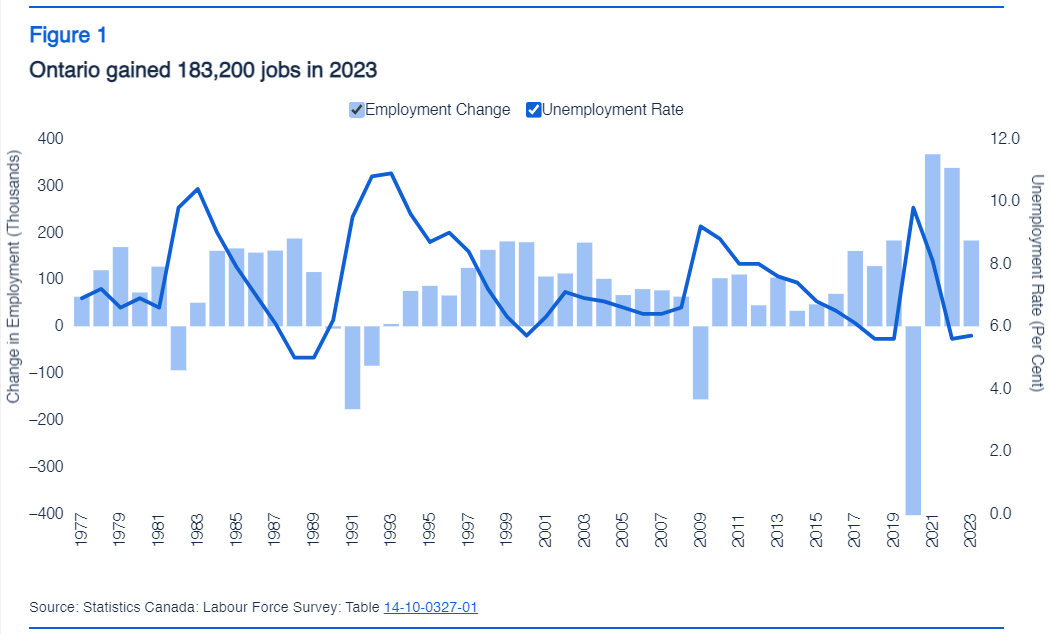
Healthcare and social assistance sector still need more than 50,000 workers, finds report

Employers in Ontario managed to chip away about a quarter of job vacancies in the province’s overall labour market in 2023, according to a report from the Financial Accountability Office of Ontario.
While the province still has about 274,500 unfilled open job positions, that number was down by around 90,900 – or 24.9% – from 2022, according to the report.
Here are the sectors in Ontario that had the most significant declines in job vacancies, according to the province’s Financial Accountability Office:
Only the utilities sector recorded an increase in job vacancies in Ontario in 2023 (+500 or +43.9%)

Meanwhile, the following sectors recorded the smallest gains when it comes to job vacancies in Ontario:
Earlier this month, the federal and Ontario governments signed a $3.1-billion, 10-year agreement for major enhancements to the health care system in the province. The agreement will also allow Ontario to add hundreds of new family physicians and nurse practitioners, as well as thousands of new nurses and personal support workers. The provincial government will expand enrollment in health care education programs by over 700 spots – including over 70 in Northern Ontario.
Overall, Ontario gained 183,200 jobs in 2023.
The average hourly wage of Ontarians increased 5.1% to $34.63 in 2023, above the 3.8% average annual CPI inflation rate.
This is true for nearly all worker groups:

Among sectors in Ontario, the wage increase was highest in the following sectors:
Meanwhile, the following sectors had the smallest percentages of wage growth in 2023:
Hourly wage in information, culture and recreation even dropped to 32.2$, down 1% year-over-year.
Ontario’s Court of Appeal previously released its decision on the controversial Bill 124, finding the law that would cap public sector workers’ wages to be unconstitutional.